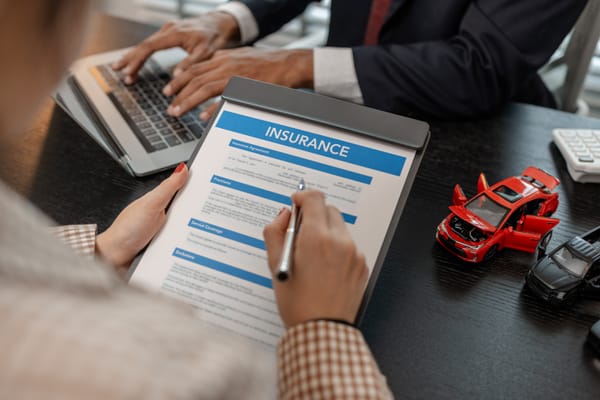Usikubali Kuingizwa Box: 5 Must-Dos When Selling Your Car in Kenya

Going abroad? Upgrading? Simply need cash? Whatever the reason it is for you to sell your car, there are several dos and don’ts that you must consider.
This Peach guide is for the dos. Why? Because when selling a car, it’s whole thing altogether.
You’ll meet the "Lowballers," who offer you half your asking price. You’ll meet the "Storytellers," with long tales of why they need a discount. And you’ll definitely meet the "Joyriders," who are more interested in a free safari than actually buying your car.
But don't stress. With a few smart moves, you can protect yourself, your car, and your wallet.
Here’s how to sell your ride without getting played.
1. Vet Your Buyers Like a Landlord in Kilimani
Not everyone who slides into your DMs is a serious buyer. Your phone will buzz with calls from people who sound like they have all the time in the world to waste yours. Your first job is to become a human filter.
Agreeing to meet every random caller is a recipe for frustration. You’ll spend your precious time and fuel meeting people who have no real intention of buying. You need to separate the genuine buyers from the professional time-wasters.
What You Must Do:
- Have a quick phone chat first. Before you agree to meet, talk to them. Ask a few simple questions like, "Have you been looking for this model specifically?" or "Is your budget in the range of my asking price?" Their answers will tell you a lot.
- Trust your gut. If a caller sounds dodgy or is overly pushy about meeting at a strange time or place, just say no. "Huyo msee anakaa tu story?" If the answer is yes, politely end the conversation. Your peace of mind is paramount.
- Meet in a safe, public place. Never, ever meet at your home. Choose a well-lit, public car park, like at a shopping centre, during the day. Think of it as a first date; you don’t bring them home immediately!
2. The Test Drive: You're in Control, Not on a Free Tour
The test drive is the make-or-break moment. It's also the riskiest part of the entire process. A buyer could get into an accident, or even worse, decide that the test drive ends in another county without you.
Handing over your car keys to a complete stranger is nerve-wracking for a reason. They could be a reckless driver, uninsured, or have sinister plans for your beloved vehicle. You need to manage the test drive like a boss.
What You Must Do:
- You must accompany them. This is non-negotiable. You are the co-pilot on this mission. Never let a buyer test drive your car alone. Sit in the passenger seat to answer questions and observe their driving.
- Check their driving licence. Before they even get in the driver's seat, ask to see their valid driving licence. Take a quick photo of it with your phone. A serious buyer will have no problem with this.
- Set the route and time limit. You are in charge here. "Hii si Uber, ni test drive." Define a short, simple route of about 15-20 minutes on roads you know well. This is enough for them to get a feel for the car without turning it into a cross-country adventure.
3. Paperwork is King: Get Your Kingdom in Order
Nothing kills a deal faster—or creates more future headaches—than disorganised paperwork. It can make you look unserious or, worse, open you up to legal problems long after the car is gone.
If your documents aren't ready, a cunning buyer might use it to haggle the price down. More dangerously, if you don't complete the ownership transfer correctly, you could be held liable for traffic offences committed by the new owner.
What You Must Do:
- Assemble your document arsenal. Before you even advertise, have everything ready. This includes the original logbook, a copy of your KRA PIN and ID, and at least two blank, signed NTSA transfer forms. Having this ready shows you're a serious seller.
- Never hand over signed forms early. The signed transfer form is like a blank cheque. Only hand it over after you have confirmed full payment. The same goes for the original logbook.
- Insist on completing the transfer. Don't accept "nitafanya transfer baadaye." The transfer of ownership on the eCitizen NTSA portal is your legal proof that you no longer own the car. Make it part of the deal that it's done together.
4. Secure the Money Before You Release the Machine
"I'll pay you tomorrow."
"My cheque is clearing."
"Let me send the M-PESA right now."
These are famous last words before a seller gets scammed. Payment is the final boss battle, and you need to win it decisively.
From fake M-PESA confirmation messages to bouncing cheques, payment scams are heartbreakingly common. A moment of trust can cost you your entire car.
What You Must Do:
- Cash is not always king. Carrying a huge amount of cash is risky for both you and the buyer. A direct bank transfer or a banker's cheque is much safer.
- Verify, verify, verify! If it's a banker's cheque, go with the buyer to their bank to have it issued, or call the bank to confirm its validity. If it's a bank transfer, log into your account and see the money for yourself. Do not trust screenshots or confirmation messages.
- Zero balance, zero car. Unless you know the the buyer personally, ensure that The rule is simple: No car, no keys, and no documents leave your possession until the full, agreed-upon amount is in your bank account and cleared.
"Hio story ya 'pesa iko njiani' tunaijua. The money must reflect!"
5. Create a Sale Agreement: The 'No-Returns' Policy
You’ve sold the car, the money is in, and you're celebrating. A week later, the new owner calls you, fuming.
"The radio has stopped working! You need to fix it!"
This is easily avoidable. You just need to make it legally clear that the sale is final.
What You Must Do:
- Be honest upfront. Disclose any known issues with the car. This builds trust and prevents them from saying you hid problems from them.
- Draft a simple sales agreement. You don't need a lawyer. A simple, one-page document that includes the buyer's and seller's details, the car's details (make, model, registration, chassis number), the final price, and the date is enough.
- Include the magic words. The most important clause is that the vehicle is sold "as is, where is" (or "voetstoots"). This means the buyer accepts the car in its current condition, with any existing faults, whether known or not. Both of you should sign it. Hakuna story za "sikujua" later on.
Too Much Work? Sometimes It Is
Reading all this might feel like you need to prepare for a battle, not just sell a car. But it isn’t. Doing it right saves time.
Selling it with Peach Cars is even faster!
At Peach, we handle the entire selling process for you. We perform a comprehensive inspection, take professional photos, market your car to serious buyers, and manage secure viewings and payments. We take the hassle and the risk off your plate.
Tired of the drama and the time-wasters? Let a professional handle it. Learn more about selling your car with Peach Cars and sell it the safe, smart, and stress-free way.




